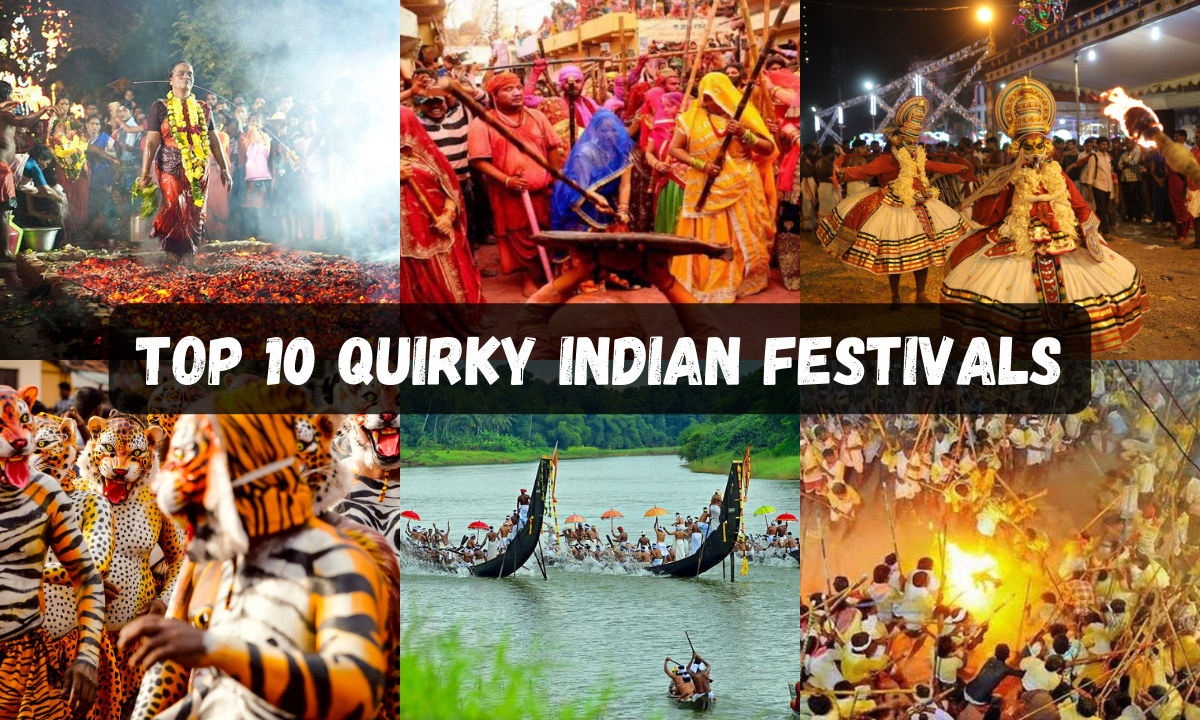India, the land of vibrant colors, rich history, and mouthwatering cuisine, is also a land of extraordinary festivals. We all know the big ones – Diwali, Holi, and Dussehra – but beneath the surface lies a treasure trove of quirky Indian festivals that will leave you wide-eyed and wanting more.
This article delves into the fascinating world of ten such quirky Indian festivals, each a testament to the country’s diverse traditions and customs. From fire walking to body piercings, to a festival dedicated to weapons, get ready to be surprised!
Table of contents
- Here is 10 Quirky Indian Festivals:
- Festival #1: Thimithi (Fire-Walking Festival)
- Festival #2: Lathmar Holi
- Festival #3: Theyyam
- Festival #4: Puli Kali (Tiger Dance)
- Festival #5: Garudan Thookkam (Eagle Hanging)
- Festival #6: Aadi Festival
- Festival #7: Snake Boat Race
- Festival #8: Dhingi Gavar
- Festival #9: Banni Festival
- Festival #10: Sume-Gelirak Festival
- Conclusion
Here is 10 Quirky Indian Festivals:
Beyond the dazzling displays of lights and vibrant colors, India boasts a wealth of quirky Indian festivals that offer a glimpse into the heart of its local communities. These unique celebrations showcase the rich tapestry of traditions, customs, and beliefs that define the cultural landscape of the country.
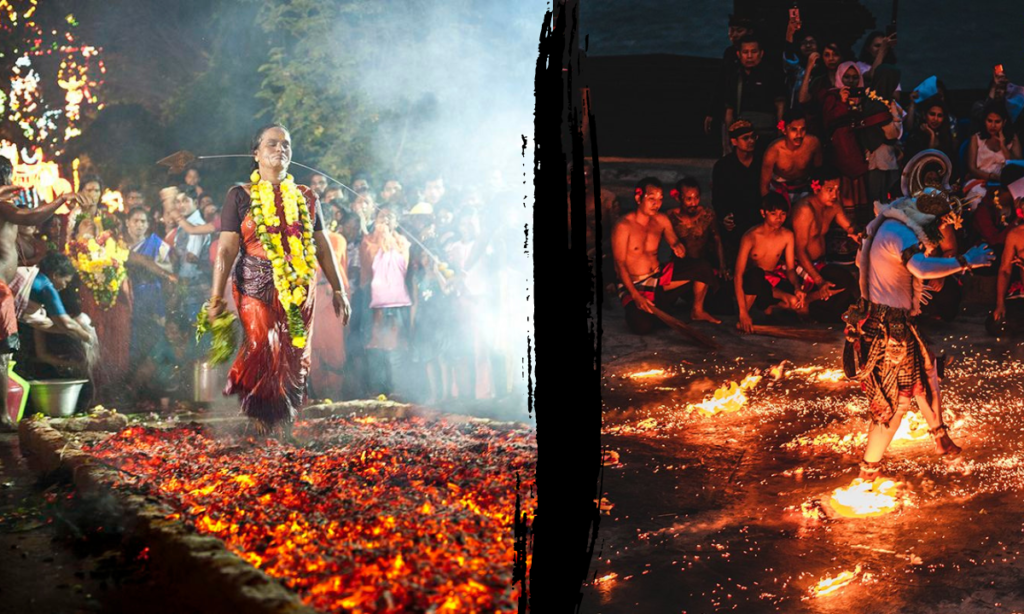
Festival #1: Thimithi (Fire-Walking Festival)
Could You Walk on Fire? Witness the Daring Ritual of Thimithi
Imagine watching people calmly stroll across a bed of burning embers. This electrifying sight is the reality of the Thimithi festival in Tamil Nadu. Devoted followers of the goddess Draupadi perform this breathtaking feat as a powerful act of faith and purification. It is the no. 1 Quirky Indian Festivals from this list.
Location: Tamil Nadu, South India
Time of Year: Typically October or November
Significance/Legend: The legend of Draupadi, a revered figure from the epic Mahabharata, is intertwined with this festival. Her daring walk through fire symbolizes purity and strength, inspiring devotees to emulate her courage.
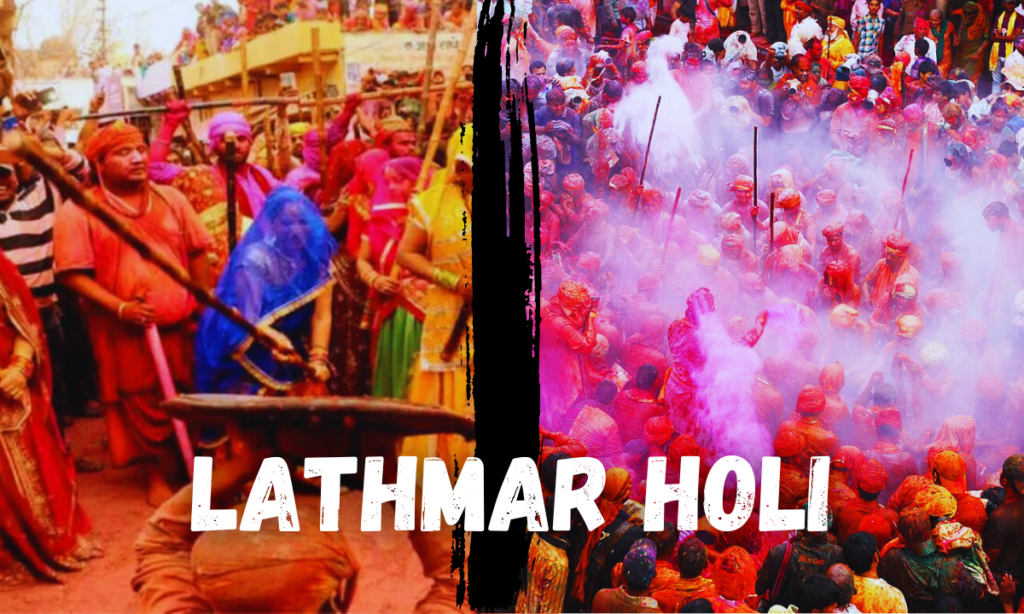
Festival #2: Lathmar Holi
Experience the Stick-Wielding Holi of Lathmar
Forget the usual vibrant colors of Holi! In the villages of Barsana and Nandgaon, Uttar Pradesh, women take center stage during Lathmar Holi. They playfully “beat” men with sticks, while men defend themselves with shields in this unique and lighthearted ritualistic battle.
Location: Barsana and Nandgaon, Uttar Pradesh, North India
Time of Year: Celebrated ahead of the main Holi festival, typically in February or March.
Significance/Legend: Lathmar Holi is rooted in the playful legends of Lord Krishna and his beloved Radha, symbolizing the reversal of traditional gender roles.

Festival #3: Theyyam
When Humans Become Gods: Kerala’s Mystical Theyyam Dances
Kerala’s Theyyam rituals are a mesmerizing blend of dance, music, and vibrant costumes. Performers, adorned as deities and spirits, embody the divine in trance-like dances, believed to channel blessings and address the concerns of villagers.
Location: Kerala, particularly in the northern districts.
Time of Year: Theyyam performances are held between October and May.
Significance/Legend: Theyyam has deep roots in ancient tribal worship practices and Hindu mythology, with each dance form representing a specific deity or ancestor.
Read more भारत के बारे में 10 ऐसी बातें जो आपको हैरान कर देंगी
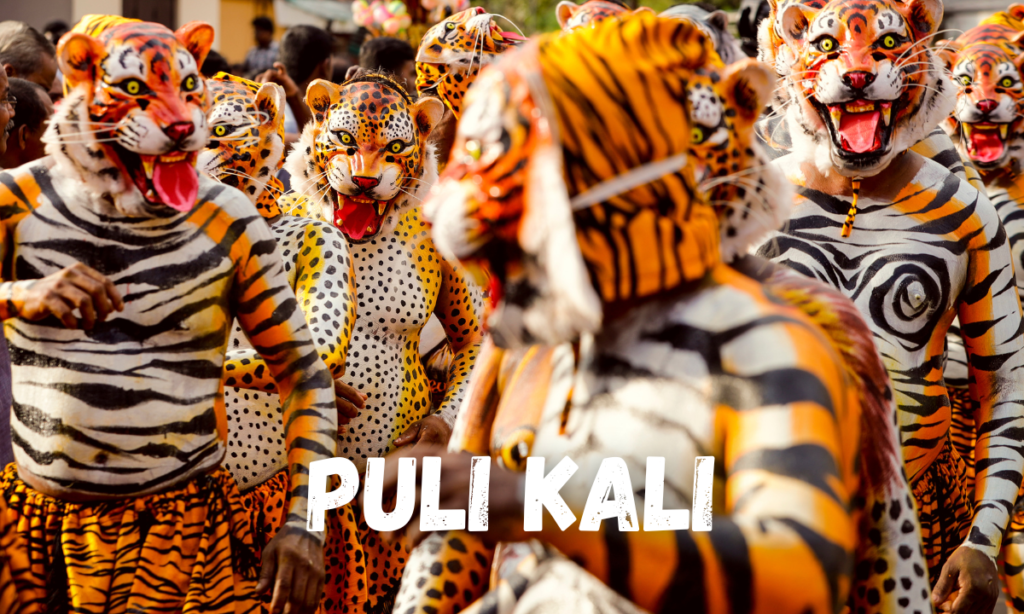
Festival #4: Puli Kali (Tiger Dance)
Unleash Your Inner Tiger: Kerala’s Roaring Puli Kali Festival
The streets of Thrissur in Kerala transform into a vibrant jungle during Puli Kali. Men painted as tigers, with detailed stripes and ferocious grins, dance energetically to the pulsating beats of traditional drums and create a captivating spectacle of color and movement.
Location: Thrissur, Kerala, South India
Time of Year: Held during Onam, a major harvest festival typically in August or September
Significance/Legend: Puli Kali draws inspiration from the myths of hunters and tigers, symbolizing strength, bravery, and the wild spirit of nature.
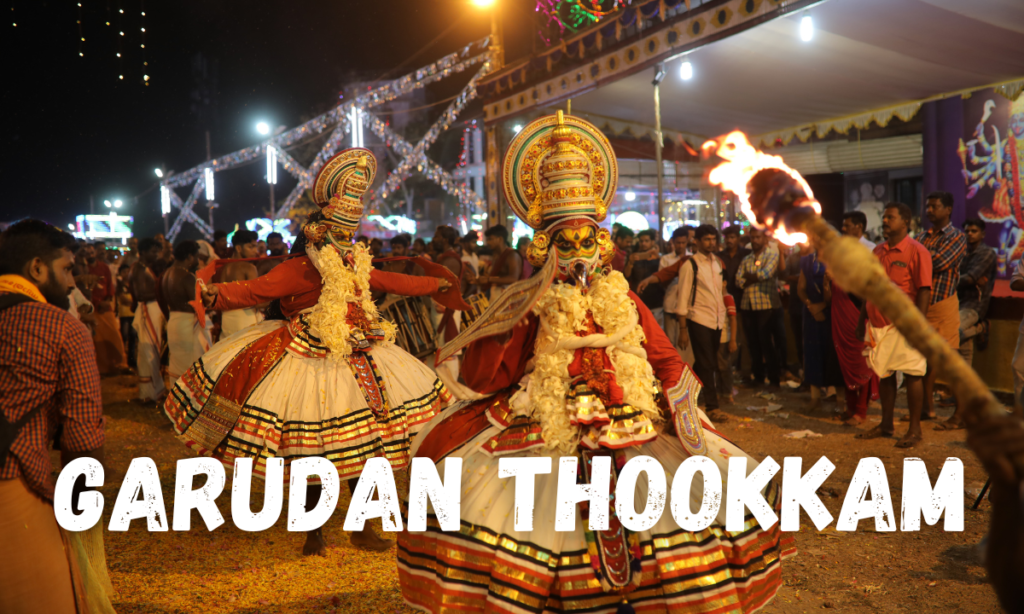
Festival #5: Garudan Thookkam (Eagle Hanging)
Suspended Sacrifice: Witness the Intriguing Ritual of Garudan Thookkam
Garudan Thookkam is a visually striking and somewhat unsettling ritual performed in certain Kerala temples. Men dressed as Garuda, the mythical eagle mount of Lord Vishnu, are suspended from tall poles by hooks pierced into their backs, in an act of devotion and sacrifice to the goddess Kali.
Location: Specific temples in Kerala, predominantly in the southern districts.
Time of Year: Typically celebrated between February and April.
Significance/Legend: The ritual serves as an offering of thanks to the goddess Kali and a plea for blessings and protection.
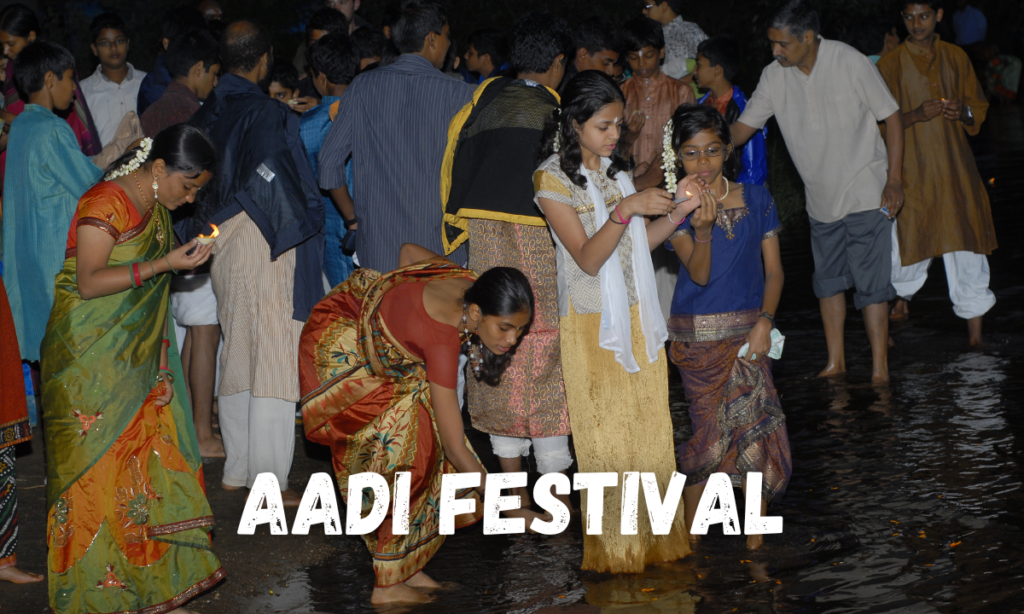
Festival #6: Aadi Festival
River of Light: Celebrating the Source of Life at Aadi Festival
Tamil Nadu’s Aadi Festival honors the life-sustaining Kaveri River with a beautiful display of devotion. Women gather to offer prayers, release traditional lamps onto the river’s flowing waters, and partake in celebratory rituals and colorful processions.
Location: Tamil Nadu, South India, especially in regions along the Kaveri River.
Time of Year: Aadi Perukku falls during the Tamil month of Aadi (mid-July to mid-August)
Significance/Legend: Aadi Festival is a thanksgiving to the Kaveri River, a source of nourishment and prosperity.
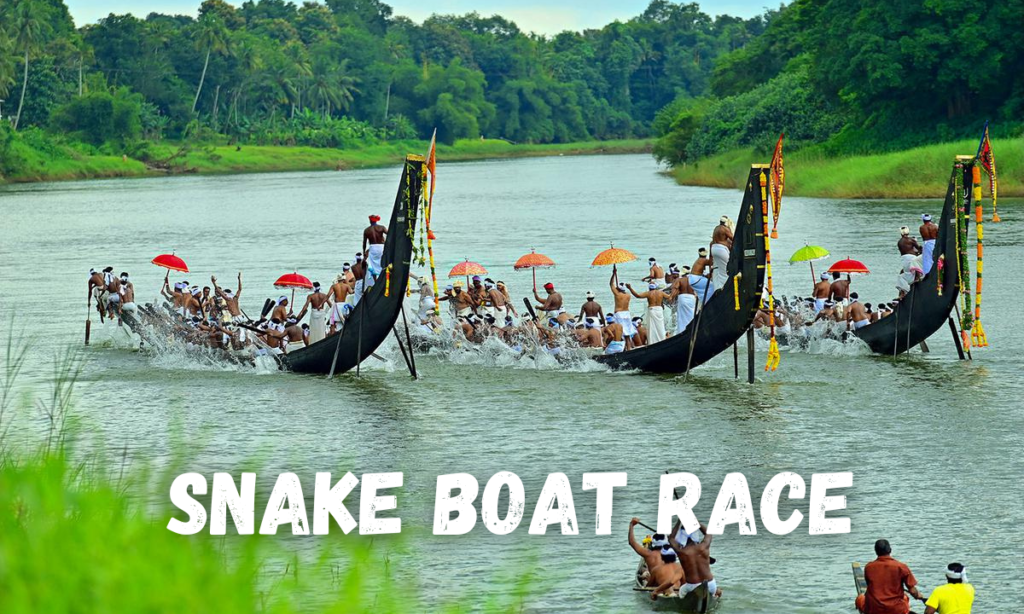
Festival #7: Snake Boat Race
Power and Rhythm: Kerala’s Thrilling Snake Boat Races
The backwaters of Kerala erupt with adrenaline and fierce competition during the Snake Boat Races. Long, sleek boats adorned with snake-like figures, are propelled by the rhythmic chanting and synchronized rowing of hundreds of men in an exhilarating display of power and teamwork.
Location: Various locations throughout Kerala, particularly in Alappuzha
Time of Year: Held during the monsoon season and around Onam, usually between July and September.
Significance/Legend: While boat racing is a popular sport in Kerala, the tradition of Snake Boat Races has roots in ancient warfare practices, and holds cultural significance in local communities.
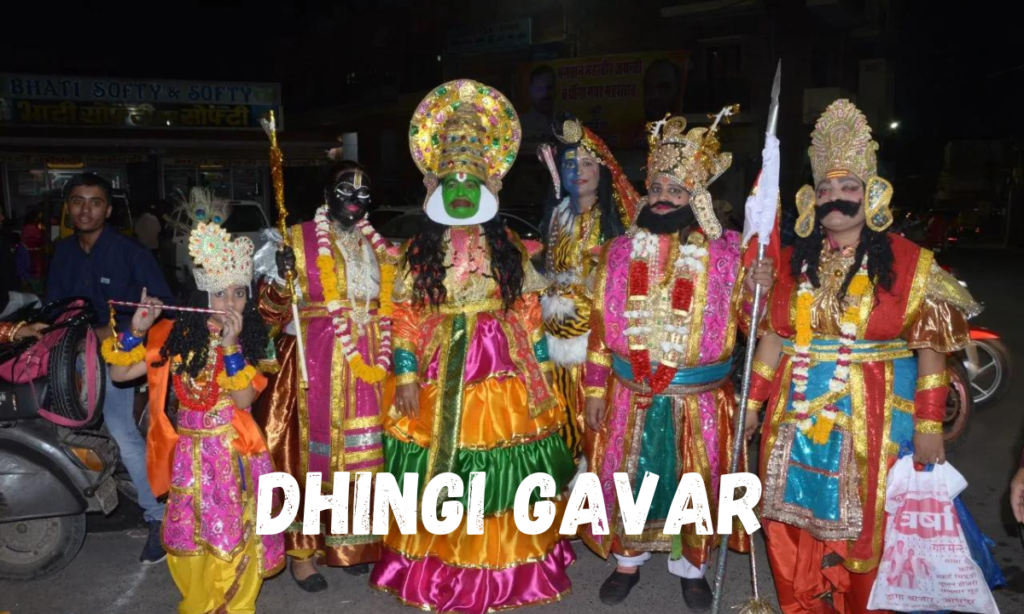
Festival #8: Dhingi Gavar
Embracing the Fire: Rajasthan’s Dhingi Gavar Festival
Dhingi Gavar, a festival devoted to Shiva and Parvati, brings a touch of the extraordinary to Rajasthan. The highlight of the celebrations involves men walking barefoot across a bed of burning embers, demonstrating their unwavering faith and seeking blessings.
Location: Primarily Jodhpur, Rajasthan
Time of Year: During the month of Shravan in the Hindu calendar (July-August).
Significance/Legend: The festival honors the love between Shiva and Parvati, and is believed to bring prosperity and protection to the community.

Festival #9: Banni Festival
A Clash of Sticks: Celebrate Valor at the Banni Festival
The arid Rann of Kutch in Gujarat becomes the stage for the Banni Festival, where a mock fight with sticks commemorates a legendary battle between good and evil. This energetic celebration showcases skills in a traditional form of martial arts.
Location: Rann of Kutch, Gujarat, Western India
Time of Year: Usually in October or November
Significance/Legend: The festival has mythological roots and celebrates the victory of Lord Krishna over the demon Banasura.
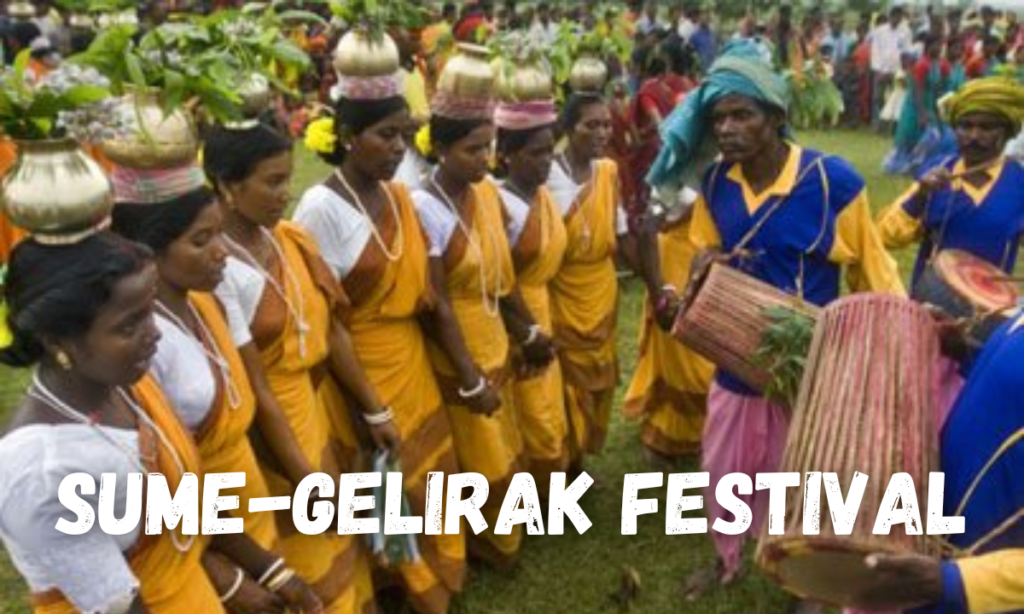
Festival #10: Sume-Gelirak Festival
Finding Love in Disguise: Odisha’s Quirky Sume-Gelirak Festival
The Gadaba tribal community in Odisha brings a unique twist to matchmaking with the Sume-Gelirak Festival. Young men dress as women and dance through the village in hopes of finding a bride, adding a playful and lighthearted element to the search for a life partner.
Location: Odisha, particularly in the Koraput region.
Time of Year: Celebrated either in April or May
Significance/Legend: While rooted in tribal tradition, the festival fosters unity and offers a unique platform for courtship within the community.
Conclusion
India’s diversity shines beyond the familiar celebrations, revealing a hidden world of fascinating and quirky Indian festivals. From fire-walking rituals to playful stick battles, these festivals showcase the unique customs, beliefs, and vibrant spirit that lie at the heart of the nation. If you seek an unforgettable cultural experience, let the road less traveled lead you to one of these extraordinary festivals.
